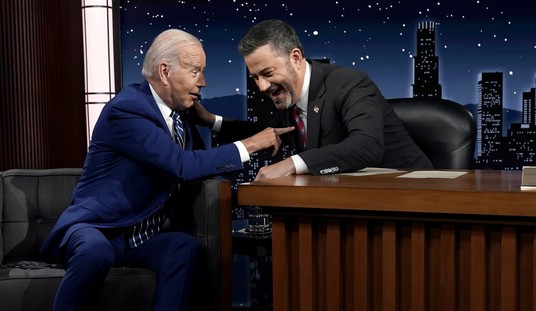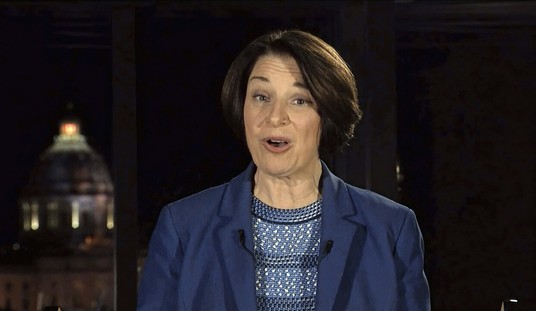The Pentagon announced Friday that it had received authorization from Obama to send an additional 1,500 U.S. personnel to Iraq over the coming months. Up until now the cap had been set at 1,600 U.S. troops, with roughly 1,400 already deployed, advising and assisting Iraqi security forces in their fight to halt the advances of the Islamic State, which controls a large portion of the country and has been expanding its control over the strategically vital Anbar province. The U.S. troops are also helping the Iraqis plan a major counteroffensive to reclaim lost territory that is planned for sometime next year.
The new troops will be placed under the same noncombat restriction as those already deployed, but they will be moved closer to the front lines…
“We needed to get a better handle on the Iraqi security forces and we needed to get a better intelligence picture” of the Islamic State, a senior administration official told reporters on a conference call Friday. “The numbers are borne out of that analysis.”
Sen. Chris Murphy (D-Conn.) is calling President Obama’s plan to send 1,500 more troops into Iraq a “temporary band-aid,” and said it should have been considered by Congress.
“I do not think president has the ability under current authority to authorize 1,500 troops without Congress acting,” Murphy said in an interview with CNN’s “State of the Union.”
He pointed to the hundreds of thousands of troops who unsuccessfully tried to build up the government in the war-torn country over the last decade, and questioned the impact of just 1,500 troops…
“I think a lot of us are going to be very reluctant to support this kind of infusion of group troops absent some suggestions,” he said.
Airstrikes by the U.S.-led coalition against ISIS targeted the Islamist rebel group Ahrar al Sham for the first time overnight in Syria, a monitoring group said Thursday.
One airstrike hit the headquarters for Ahrar al Sham in Babsaqa, Idlib province, near the Bab al-Hawa border crossing with Turkey, the London-based Syrian Observatory for Human Rights said…
One of the more conservative Sunni militant groups in the rebel alliance, Ahrar al Sham has members that sometimes fight alongside the al Qaeda-affiliated Islamist militant group Jabhat al-Nusra, but against ISIS.
More than 1,000 foreign fighters are streaming into Syria each month, a rate that has so far been unchanged by airstrikes against the Islamic State and efforts by other countries to stem the flow of departures, according to U.S. intelligence and counterterrorism officials.
The magnitude of the ongoing migration suggests that the U.S.-led air campaign has neither deterred significant numbers of militants from traveling to the region nor triggered such outrage that even more are flocking to the fight because of American intervention…
The trend line established over the past year would mean that the total number of foreign fighters in Syria exceeds 16,000, and the pace eclipses that of any comparable conflict in recent decades, including the 1980s war in Afghanistan.
Two of the main rebel groups receiving weapons from the United States to fight both the regime and jihadist groups in Syria have surrendered to al-Qaeda.
The US and its allies were relying on Harakat Hazm and the Syrian Revolutionary Front to become part of a ground force that would attack the Islamic State of Iraq and the Levant (Isil)…
“As a movement, the SRF is effectively finished,” said Aymen al-Tammimi, a Syria analyst. “Nusra has driven them out of their strongholds of Idlib and Hama.”
The collapse of the SRF and attacks on Harakat Hazm have dramatically weakened the presence of moderate rebel fighting groups in Syria, which, after almost four years of conflict is increasingly becoming a battle ground between the Syrian regime and jihadist organisations.
Moderate rebels in Syria are losing ground in their two-front war against the Assad regime and the extremist group Islamic State, and are pleading for more support from the West.
As the U.S.-led coalition fighting Islamic State delivered airstrikes and military aid to help Syrian Kurdish militia fighting in the city of Kobani over the past week, the Western-backed Free Syrian Army bemoaned the absence of similar help, as it lost towns and suburbs in and around the major cities of Damascus, Aleppo and Hama to regime forces.
President Bashar al-Assad ’s military bombarded the opposition with more than 500 airstrikes and killed 750 people in one week, according to rebels and opposition groups monitoring the civil war.
“No one sent us weapons like the Kurds in Kobani,” a senior brigade leader in the FSA, said by phone from the city of Hama. “This has really affected FSA fighters’ morale. They feel disappointed.”
For four grueling months, Naim al Goud, his kinsmen and the local police fought off an Islamic State offensive against his town near Hit, a key city in Iraq’s war-torn Anbar province. In his telling, their constant pleas for Iraqi army intervention and U.S. airstrikes were ignored…
Exhausted, hungry and low on ammunition, al Goud and hundreds of his tribesmen ceased firing on Oct. 22 in return for a pledge from the Islamic State that civilians wouldn’t be harmed. They then set out on a 15-hour overnight drive through the desert, leaving behind families and associates and nursing another in a long list of Sunni tribal grievances that are hindering reconciliation with the Shiite-led government and threatening to derail President Barack Obama’s plan to crush the Islamic State.
“They did nothing for us,” al Goud said in an interview last week in a rented house in Baghdad. “It’s all killing and disaster.”
A week later, the Islamic State executed more than 40 Albu Nimr captives on a Hit street and drove thousands of Albu Nimr civilians into the desert, where hundreds have been slaughtered – more than 400 by Monday. Tribal leaders’ calls for help from the Iraqi army and for U.S. airstrikes again went unanswered.
On the mountain, between 6,000 and 7,000 civilians and between 2,000 and 3,000 Yazidi fighters are still trapped and struggling to stay alive, cut off from any supply routes, the Yazidi leaders said. Since the airstrikes trailed off to a trickle in October, ISIS has taken over the five remaining Yazidi towns near Mount Sinjar, killing hundreds of civilians and abducting hundreds more.
Even the humanitarian airdrops have halted. The Iraqi government provided two helicopters to deliver aid, but they are old and fly only once or twice a week, Babasheikh said. About 100 Kurdish Peshmerga fighters are on the mountain, he added, but they don’t engage ISIS. The extremist group continues to fight to take the mountain once and for all, and the situation on Mount Sinjar could go from dire to catastrophic within a couple of weeks, the Yazidi leaders said.
“President Obama promised that they are not going to let ISIS get any more land, that they are not going to let them get another genocide on the Yazidis. But this is going to be worse than in August,” said Kamal Elias, a Yazidi activist who is part of the delegation. “If ISIS gets to the mountain, all of these people are going to be slaughtered, and then it’s going to take years for the U.S. or anyone else to get them out of the mountain.”
Despite being almost completely unaccountable to any official ministry, the Shiite militias have been tasked by the government with a key role in the war against the Islamic State. Yet what we saw in Yengija laid bare the costs of relying on these groups. Beyond the main road, an entire neighborhood of two-story homes was razed and flattened, with concrete slab roofs heaped atop piles of rubble. Personal belongings, children’s toys, and furniture peeked out from under the debris, a poignant reminder of the Sunni Arab families who, until recently, had lived there. All these families had fled in August when the militia started battling the Islamic State fighters in the surrounding area…
What we saw at Yengija was not at all unique. During our visit to a makeshift camp at the foot of nearby hills, we met dozens of displaced families from more than 20 predominantly Sunni villages within a 10-mile radius of Yengija. They all provided similar, chilling accounts of the systematic destruction of their villages by government-backed militias determined to prevent Sunni Arabs from returning. Hundreds of families have been left homeless, and are now taking shelter in abandoned factories, in graveyards, and under cars and trucks. They were pushed from their homes by the Islamic State, but are prevented from returning by these militia groups…
There is mounting evidence that Iraq’s Shiite militias are using the fight against the Islamic State as cover for a campaign of sectarian violence targeting Sunni Arab communities. The Baghdad authorities have turned a blind eye to these militias’ crimes, while foreign governments have ignored the militias’ use of their military aid to pursue their campaign against Sunni Arabs. If the central Iraqi government doesn’t rein in Shiite militias and hold them and their commanders to account for their crimes — including war crimes — Iraq may enter even more terrible times.
The world’s attention has been focused on the medium-sized Kurdish town of Kobane, on the Syria-Turkey border, whose accessibility has provided countless opportunities for telegenic news coverage of American air strikes, which have multiplied in size and number. But Kobane is a secondary focus of the war that has been waging in Syria for more than three years; and that war is itself supposed to be secondary in strategic heft for America and its allies, including Britain…
Analysts and some Iraqis now wonder whether President Barack Obama’s declared strategy in the Middle East has been abandoned in favour of pursuing a short-term agenda dictated by the news agenda: that the “CNN factor was at play”, as Ben Barry, a former British Army brigadier, put it after compiling a detailed analysis of the military situation in Iraq.
Isil may even have drawn the West into a trap – pouring second-grade but eager foreign recruits into the battle for Kobane, while pursuing their more important goals next door, he said.
But even if the Kurds push ISIS out of Kobani, what does that signify in the larger struggle? What happens next? And what is the Obama administration’s desired endgame and its path for getting there? These questions have no clear answers, and that speaks volume…
Even on a tactical level, it’s hard to see where the Obama administration is going with its anti-ISIS venture. Figures released by U.S. Central Command show that the airstrikes over Syria and Iraq, combined, rarely exceed 25 per day. That’s not nothing, but it’s close. A joke recently circulating among Kurds was that they couldn’t tell whether the Americans were not fighting while pretending to fight—or fighting while pretending not to fight. (That was a couple weeks ago; the perception has changed since, but it still colors their historically skeptical outlook of the United States.)…
So here we are, back in the Middle East again, shoring up a dysfunctional regime, caught in the middle of a sectarian conflict, saddled with allies who aren’t doing much and whose interests conflict with ours, roped off from potential allies who could do much more but whose interests conflict with ours more deeply, and facing a bunch of millenarian savages whose appeal grows as our involvement deepens.
Obama knew this would happen. He understood the region’s dynamics. It was why he resisted intervening in these conflicts from the outset. But he took one step in, trying to help, carefully limiting his actions, to pre-empt the proverbial slippery slope; yet here he is, scrambling to climb back up the hill.
ISIS represents a “deviant cult within Islam,” which means it is a problem that can be solved only within Islam. Civilizations don’t normally allow other civilizations to enter their territory to settle their internal struggles. And when they can’t prevent it, they certainly don’t like it. Freeman writes that Western-led military intervention is not just an inadequate response but a “preposterously counterproductive response.” The doctrines of ISIS cannot be credibly rebutted by non-Muslims. “Arab religious engagement and moral leadership are essential to contain and defeat” ISIS, writes Freeman.
When the United States takes the lead in such a fight, two problems emerge. One is that outside military intervention roils the sensibilities of millions of Muslims who recoil at the sight of their lands and people being destroyed by alien forces. That simply aids ISIS in its efforts to recruit new warriors to its cause. America’s drone warfare in the region, for example, writes Freeman, “has not decapitated anti-American terrorism so much as metastasized it.”
Another problem is that it relieves regional players of the responsibility for protecting themselves from ISIS and rising above ongoing petty squabbles and less pressing strategic aims. “U.S. policy,” writes Freeman, “should encourage the nations of the Middle East to develop effective political, economic, and military strategies to defend and advance their own interests, not rush to assume responsibility for doing this for them.” But, instead of facing a coherent Middle East counterforce, ISIS now is “blessed with an enemy divided into antagonistic and adamantly uncooperative coalitions.”
The Obama administration’s policy to completely ignore the Assad regime’s ongoing terrorization of his people has been negligently counterproductive, particularly while American jets fly in his airspace. The Administration’s catastrophic failure to coordinate with the moderate opposition on anti-ISIS strikes, and its failure to provide them sufficient weapons and supplies, has alienated them in the battle for local public support against extremist groups. In the first week of the airstrikes, and again on Wednesday, the US hit Al Nusra targets. When this happens, the Syrian people and fighters draw conclusions based the facts that they see and feel.
First, the U.S. strikes have given Syrians no relief from daily barrel bombs and other Assad attacks. Second, the U.S. strikes hit Al Nusra, a group that does work to give that relief. Third, moderate opposition groups receive weapons and modest support from the United States. Fourth, the President of the United States keeps saying that the fight against Assad and solving Syria’s problems is not a priority. With these fact inputs, Al Nusra is able to convince the people that the moderate opposition is part of an American conspiracy to keep Assad in power and terrorize the local population. Last weekend, Al Nusra capitalized on this narrative by successfully attacking the moderate battalions of the Syrian Revolutionaries Front and the Hazzm Movement. The US clumsily responded by hitting Al Nusra on Wednesday, with local reports of civilian casualties. Meanwhile, Assad’s bombs continue to fall on children…
The door is closing on America’s opportunity to prevent a generation of terrorists from emerging in Syria. President Obama’s steadfast neglect of the root cause of Syrian extremism will spell defeat for the United States.
Via RCP.








Join the conversation as a VIP Member